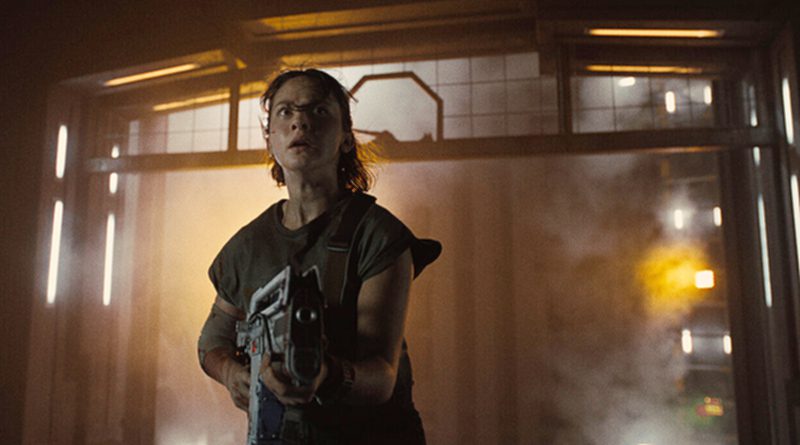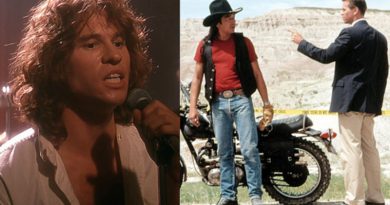Alien: Romulus (2024) Review: A Mostly Return-to-Form Alien Movie That Effectively Combines Sci-Fi Horror and Action With Slasher-Film Tropes
In Alien: Romulus, which marks the first movie since 2017 after the middling effort of Alien: Covenant, Fede Álvarez’s primary goal is going back to basics. Back when Ridley Scott’s Alien was more of a slow-burn dread of atmospheric sci-fi horror before gradually evolving into James Cameron’s thrilling, action-packed spectacle of the 1986 sequel. It’s the best of both worlds that fit Álvarez’s intention of setting Alien: Romulus between the events of the first two movies.
While paying homage to Alien and Aliens sounds like the right decision, what worries me the most is a potential sense of déjà vu experience. The same old storytelling beats that see a group of human survivors trapped in a confined location (typically a spacecraft) with the Xenomorph alien(s) and the crawling Facehuggers lurking somewhere in the dark. It was a formula that has become synonymous with the Alien franchise with varying degrees of success. The first two movies did well but subsequent efforts like Alien: Resurrection and Alien: Covenant felt more of tired rehashes.
The good news is that Álvarez manages to find a fresh angle in his screenplay that he co-wrote alongside Rodo Sayagues, beginning with the introduction of younger characters for a change. These young ones in question include Rain Carradine (Cailee Spaeny) along with his synthetic brother Andy (David Jonsson), Tyler (Archie Renaux), Kay (Isabela Merced), Bjorn (Spike Fearn) and Navarro (Aileen Wu). They are a group of scavengers from the mining colony of Jackson’s Star, which takes place in 2142 — 20 years after the events of Alien. They board the Weyland-Yutani Corporation-owned Corbelan spacecraft to reach the abandoned Renaissance space station in search of a technology they can use to travel to the paradise-like planet of Yvaga.
But their scavenging hunt inside the space station, which has two modules including Romulus and Remus, ends with a nightmare after they discover the Xenomorphs have been inhabiting the station.
If the above synopsis sounds familiar, that’s because it echoes Álvarez’s own Don’t Breathe, which follows three young thieves thinking they hit the jackpot by breaking into a blind old man’s house, only to find themselves dealing with someone unexpected. Alien: Romulus may feel like it’s “Don’t Breathe in Space” with the Xenomorphs and Facehuggers substituting the blind old man while the scavengers replace the thieves.
But thankfully, it doesn’t feel like a shot-for-shot remake of that 2016 invasion horror movie and most of all, he doesn’t try to retcon or complicate the already-convoluted lore that plagued the Alien franchise. Instead, he combines the best chunks with bits and pieces from past Alien movies and plays them like greatest hits meshes altogether, even though he draws his inspiration mostly from the first two movies. This may come across as a mere fan service but Álvarez doesn’t slavishly succumb to it, despite all the nods and callbacks.
I’m glad the movie runs at a standard two-hour length rather than the longer-than-expected 2 1/2 hours seen in many modern Hollywood blockbusters these days. Álvarez tells his story efficiently when establishing his characters, particularly the sibling dynamics between Rain and Andy.
Past Alien movies have depicted androids or artificial persons typically with shady motivations seen in the late Ian Holm as the mysterious and self-centred Ash or the rogue David played by Michael Fassbender. Jonsson’s Andy marks a refreshing change of pace that falls in line with the humanising side of Lance Henriksen’s Bishop in Aliens. His sympathetic turn as a meek but caring and supportive android shares a strong emotional bond with Spaeny’s Rain, where the latter treats him like her biological brother. Jonsson even steals the show from the rest of the cast, notably in the subsequent sequence aboard the Renaissance space station that showcases his chameleon-like acting prowess.
Spaeny, who receives the top billing here, isn’t a slouch either. She does a good job playing a fiercely independent but vulnerable young woman who has been longing for freedom and a better life with his brother, Andy. She may reportedly studied Sigourney Weaver’s Ellen Ripley but she managed to make her Rain character uniquely her own without resorting to a copy of Ripley-like wannabe. In the later scene where she is forced to confront the Xenomorphs and Facehuggers, she remains believable in portraying an inexperienced person who improvises a lot even with a pulse rifle in her hands while relying on her survival instinct to stay alive.
The word “inexperienced” combined with the concept of young survivors-in-peril helps to elevate the tension and stakes upon facing their biggest fears against the deadly life forms. To further achieve that sense of palpable danger, Álvarez insists on keeping things as practical as possible. That means building the real sets from every nook and cranny of the spacecraft and the space station, giving it a tangible look and feel that the characters are actually trapped in the claustrophobic confines of these settings. I can imagine it would have worked a lot less effectively if the movie relied heavily on the actors reacting solely in front of the green screen.
The practical approach stretches as far as resulting in an old-school method of incorporating a mix of prosthetics and animatronics for the Xenomorphs and Facehuggers. Although there is some spotty VFX used in certain scenes including a controversial choice that may divide the fans and audiences alike, the overall effects remain one of the best in the Alien franchise. Another significant thing that I noticed in Alien: Romulus is Galo Olivares’ atmospheric cinematography successfully evokes its distinct visual aesthetics right down to the colour grading to make it look like it was filmed in the ’80s era when Alien and Aliens were released at the time.
As seen in his Evil Dead reboot and Don’t Breathe, Álvarez knows his way around with the technical proficiency of executing suspenseful moments and thrilling set pieces. He made good use of the derelict space station with all the dimly lit corners and darkness as his visual playground equivalent to a slasher movie, complete with jump scares as well as graphic violence and gore. He also emulates the action-packed and propulsive beats of James Cameron’s 1986 sequel and although not entirely successful (there are times his erratic direction tends to get in the way of breaking the momentum), he still has what it takes to come up with some notable scenes. There are two that come to mind: the zero-gravity and elevator shaft sequences that showcase Álvarez’s flair as an ace visual stylist.
Credits also go to Benjamin Wallfisch’s riveting score that blends the late Jerry Goldsmith and James Horner from the respective first two movies while adding a unique, synthesiser-laden spin to his overall musical composition. Alien: Romulus is pretty much a straightforward movie, exactly what you would expect for an Alien movie that’s heading to its original roots. Except for the much-talked-about third act, which I’m sure is going to be as polarising as say, Prometheus. Personally, the third act has its moment but doesn’t work out as great as I thought. Certainly not the mind-blowing kind, especially given its visual and narrative similarity that reminds me of a certain movie.
Alien: Romulus may have been a flawed effort but looking at the bigger picture, Álvarez has course-corrected the franchise that it’s a positive step in the right direction compared to the last Alien movie seven years ago.





